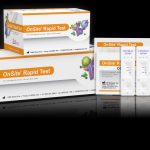ART COMPASS is an industry platform that puts physicians, administrators, and lab staff on the same page as their patients.
It goes without saying that quality assurance is an ongoing process in the IVF laboratory setting. Guidance for embryologists on what to monitor, appropriate levels of monitoring and best practice in this area is surprisingly unclear.
A good example of this kind of confusion can be found in cryo storage tank monitoring. Vacuum breaches can go unreported because there is so little data on how liquid nitrogen storage tanks behave when their vacuum is removed! (1)
Laboratory staff burn out
Senior laboratory staff ensure that staff, equipment, and the lab environment remains within the parameters of the IVF clinic’s Quality Control (QC) program. They can be overburdened trying to monitor and record data appropriately.
In addition, the data from QC monitoring tends to be paper based at origination. This means that it is not very user-friendly and is difficult to immediately relate to patient outcomes.
With an embryologist’s other professional duties, one wonders whether archaic reporting systems for QC can contribute to embryologist burn out?
Staff competency: an essential component of QC
Staff competency is another crucial component of an IVF laboratory’s quality management system that directly impacts clinical outcomes. Embryologists must be competent to make dozens of clinical decisions that can affect cycle outcomes. This includes monitoring IVF key performance indicators (KPIs) (2), so it is important that staff competency is also recorded and monitored.
The college of American Pathologists says, “Documenting the competency assessment of your staff is the #1 deficiency cited by all major laboratory accreditors. One in four laboratories do not fully meet the documentation requirements of competency assessment.”
ART COMPASS (3): a new paradigm
- A digital, cloud-based platform for 21st Century IVF laboratory Quality Control and Quality Assurance reporting
- Digitizing competency assessments (4)
- Training documentation
- Annual procedure evaluations
- Real time in-cycle embryologist KPI statistics for maximum efficiency and data-impact.
ART Compass can be used to:
- Deploy standardized training and detailed survey protocols to embryology and andrology technicians
- Evaluate competency and track inter-laboratory and inter-technician variation
- View comparative data at the technician and clinic level.
ART Compass offers everything you would expect in a 21st Century QC reporting system:
- Rapid data collection
- Real-time analysis
- Management and distribution of multi-media files
- Automated reporting
- Ability to utilize device hardware features such as the phone camera
- Image editing with one’s fingertip
- Biometric (fingerprint) ID protocols to enhance security.
Compatible with other digital IVF applications
ART Compass has the ability to integrate and evolve with other emerging digital IVF QC/QA tools, such as:
- Electronic witnessing systems using RFID tags, QR codes, barcodes or other image capture approaches can be integrated with ART Compass. This can improve accuracy, reduce spent recording witnessing procedural steps, and match it all to outcome data
- ‘Internet of Things’ (IOT) sensors. These have shown promise in real time monitoring of room temperature, humidity, volatile organic compounds, and door opening counts (5). This data can be overlaid on embryologist KPIs and clinical outcome data collected via ART Compass
- Electronic health records: ART Compass has the potential to integrate with electronic health records to relate measured parameters to clinical outcomes
- Thermal imaging cameras: when connected to mobile apps these allow constant monitoring of external signs of cryostorage failure: vapor, frost and temperature change of the air or storage vessels
- Weight based monitoring systems (6): these allow for continuous monitoring and the detection of weight changes to just a few hundred grams and could provide additional insights into hard-to-measure variables such as how long are tanks open while daily or weekly measurements are taken e.g. during LN2 filling, or when inventory is performed.
ART COMPASS: ‘by embryologists, for embryologists’
Art Compass was created by some of the most luminary scientists in IVF QC / QA (7). Starting out in clinical embryology, Dr. Carol Curchoe had no way to compare clinical decision making to people who had been working in the field for many years.
She had no way to easily know if her judgment in grading embryos was correct, or even close, except by sitting with senior embryologists at the microscope.
Of course, senior embryologists don’t REALLY have time for this activity, given their many responsibilities and clinical workload! Hence, ART Compass!
ART Compass started as one single competency assessment module. It has since grown beyond their wildest expectations, to include a recently awarded grant from the State of California, and a collaboration with the World Health Organization to deliver andrology image content for the upcoming 6th edition laboratory manual for the examination and processing of human semen.
For further details about ART COMPASS, please click here.
ART Compass will be presenting a pre conference session at The American Association of Bioanalysts.
References
- Kimball O. Pomeroy, Michael L.Reed, Brian LoManto, Stanley G.Harris, W. Brent Hazelrigg, Dawn A.Kelk. 2019. Cryostorage tank failures: temperature and volume loss over time after induced failure by removal of insulative vacuum. Journal of Assisted Reproduction and Genetics. November 2019, Volume 36, Issue 11, pp 2271–2278
- ESHRE Special Interest Group of Embryology: Alpha Scientists in Reproductive Medicine 2017: The Vienna consensus: report of an expert meeting on the development of art laboratory performance indicators. Human Reproduction Open, Volume 2017, Issue 2, 2017, hox011
- https://artcompass.io/
- Carol L Curchoe, et al. 2018. Development of a mobile competency assessment platform for IVF laboratory quality management systems. http://cme- utilities.com/mailshotcme/FRM/2018/Abstracts/32.pdf
- Marinder Sra, et al. 2017. A web of IOT sensors to monitor quality control in an IVF embryology lab. J Int Soc Telemed eHealth. 2017. 5(GKR) e55
- The Anatomy of Liquid Nitrogen (LN2) Cryo Dewar Tank Failures. Presented at ASRM 2019, Philadelphia, USA. https://www.ovationfertility.com/research/the-anatomy-of-liquid- nitrogen-ln2-cryo-dewar-tank-failures/
- https://artcompass.io/home/about-art-compass/


